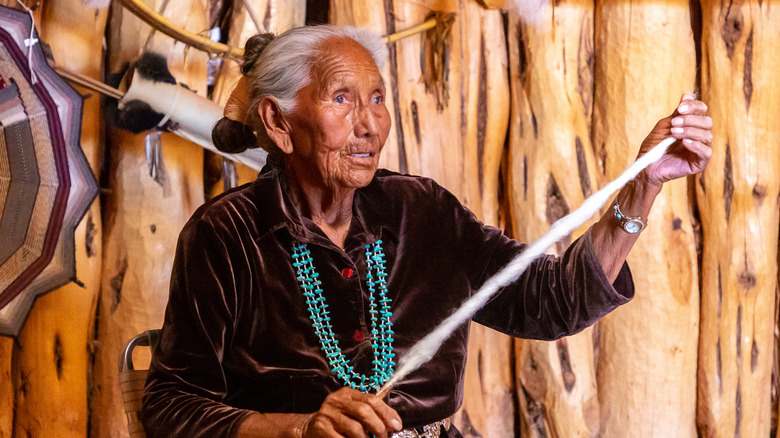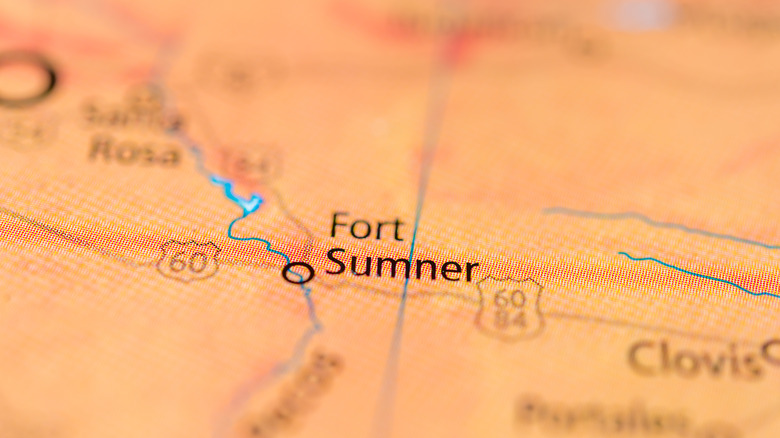What You Should Know About The Navajo Nation's Long Walk
The Long Walk is another tragedy perpetrated by the U.S. government against an indigenous people. It took place in the 1860s and almost wiped out the Navajo Nation, causing untold suffering, disease, and death. And it's hard not to see the similarities to what happened to the Cherokee Nation and other Woodlands tribes in the southeast during the Trail of Tears in the 1830s.
The Navajo, or Diné as they called themselves, were taken from their ancestral homeland that stretched across modern-day Colorado, New Mexico, and Arizona. From these regions, they were forced to march between 250 miles to 450 miles — depending on the route — to the Bosque Redondo Reservation. Bosque Redondo was a desolate stretch of land at Fort Sumner in current-day New Mexico that functioned more like an internment camp with U.S. soldiers on guard (via Native Knowledge 360).
During the mid-19th century, the United States was mired in the Civil War as its government was trying to expand its land holdings west of the Mississippi. It had won the Mexican-American War in 1848 and signed the Treaty of Guadalupe Hidalgo that gave it upper California and New Mexico, which included what we now know as Arizona, New Mexico, and parts of Utah, Nevada, and Colorado. According to the National Archives, Mexico also abandoned all claims on Texas per the treaty and agreed to the Rio Grande as the southern border with the U.S. The Navajos signed treaties as well, but they tried to prevent efforts at creating routes from the East across their lands to California. Although they mounted campaigns of resistance, they ultimately failed.
Death during the brutal Long Walk
In 1863, the commander of the New Mexico Territory, Gen. James Henry Carleton, conducted a scorched-earth policy to solve the "Navajo problem" once and for all (via NPR). A campaign against Diné was headed by soldier and frontiersman Christopher "Kit" Carson, who destroyed homes and water sources and killed livestock to drive the Navajo from their lands, Native Knowledge 360 reported. After a merciless roundup in which only a few escaped, most surrendered and were forcibly marched to Bosque Redondo.
During the Long Walk, 10,000 Navajo women, children, and the elderly, and some Apache, were herded for miles during extreme conditions — both freezing in the winter and boiling in the summer. The journey's destination was Fort Sumner, where they lived in dwellings worse than hovels made of "branches and tattered canvas," according to NPR. After four years in these squalid conditions, an estimated 2,400 people had died from disease (via Native Knowledge 360).
By 1866, the U.S. government recognized that the land on the reservation could not adequately support the Diné. In 1868, the Navajos persevered by turning their tragedy into eventual triumph: they negotiated a treaty with the U.S. that created diplomatic ties with the government and, most importantly, allowed them to return to their homelands.

